How To Paint Darker Skin Tones
x tips for painting pare tones
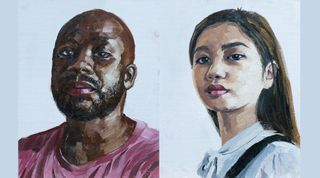
Painting peel tones and creating accurate colour is no easy chore. Getting the depth of color spot on and capturing light and dark tones by mixing colours requires a fragile rest and a careful touch on. This is especially truthful when yous have a express color palette available.
In this tutorial, we explain how to mix the perfect skin colour, for both darker and paler pare tones. We use a mix of only six colours to get the perfect shade and then you tin can meet how it can exist done. Here, nosotros've used oils but the same techniques can work for a range of paints.
For more than oil paint resources, see our guides to the best oil paint supplies and best oil pigment canvas. Want something more varied? Here's our best fine art supplies roundup.
How to mix paint for darker skin tones

Acquire how to approach mixing darker skin tones using a limited palette. Build from an initial local colour and push out extremes of light and night, plus details. And get the right paint by picking them from our all-time oil paints guide.
01. Paint mid-tones
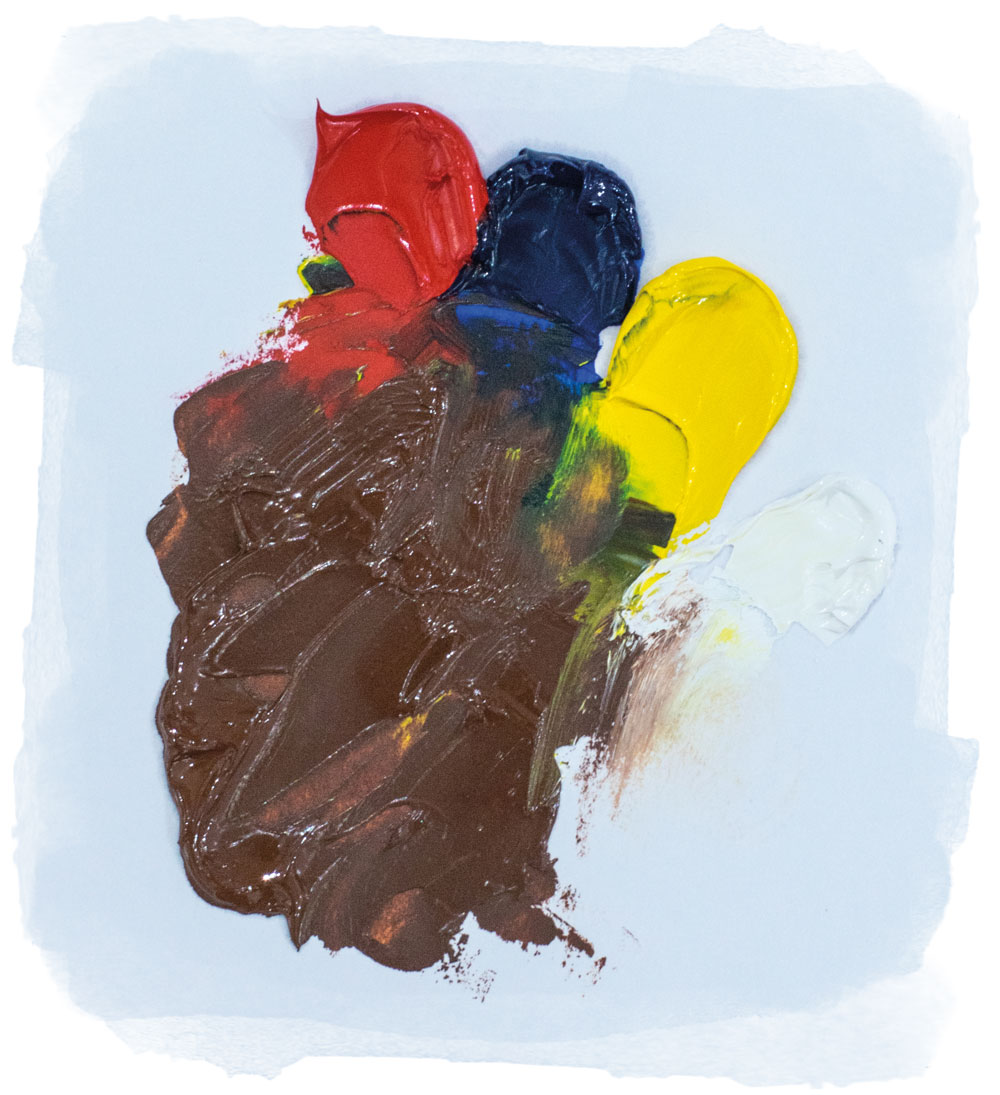
(Image: © Rob Lunn)
All skin tones range from base colours of oranges through to browns. You starting time demand to find the local colour of your subject – this is the midpoint of your bailiwick'due south skin tone. Y'all can then button that midpoint to its lightest and its darkest points. Dependent on lighting, if you mix three unrelated colours to represent these shifts in tone, they volition non sit realistically.
Here, we've mixed a brown with a fairly fifty-fifty balance of Scarlet Lake and Ultramarine Blueish to create a violet, added heavy Yellow Lake to desaturate the violet, and a affect of Titanium White No.one to cool it down a fiddling.
02. Create lighter peel tones

(Epitome: © Rob Lunn)
In this mix yous want to button your midpoint mix towards the lightest peel tones. Accept the same mix of Ultramarine Blue, Scarlet Lake, Yellowish Lake and Titanium White No.1, but add increasing amounts of Yellow Lake and Titanium White No.1. If yous find the mix starts to get too xanthous, carefully add minor amounts of Scarlet Lake and Ultramarine Blue to bring it back in line.
The Ruby-red Lake and Ultramarine Blue combine to create a warm violet that yous are then desaturating (or greying down) with your warm Yellow Lake to create a warm chocolate-brown. Apply a tonal calibration to test if you lot've got the correct tone in your mix.
03. Create darker pare tones

(Image: © Rob Lunn)
Adapt the midpoint again, simply this time button it towards the darkest peel tones. Taking the aforementioned mix of Ultramarine Blue, Cherry Lake, Yellowish Lake and Titanium White No.1, nosotros're now adding increasing amounts of Crimson Lake and Ultramarine Blueish. If you lot find the mix going as well bluish, too red or too violet, simply add more of the counter-balancing colour. Too cerise? Add more blue. Likewise blueish? Add together more scarlet. Too violet? Add more yellow. Once you have these three steps mixed, you can experiment adding boosted colours to each to pick out the diverse number of colours found in all skin.
04. Mix pigment for hair

(Paradigm: © Rob Lunn)
One of the near impressive examples of the 12-footstep and six-stride color bike method is mixing your own blacks. Well, if you're a paint geek similar we are, anyway. As with the brown, we're going to mix a violet and then desaturate information technology with its complementary colour – yellow – but this time we'll be using all the cool versions of our colours.
Mix the Alizarin Crimson and Phthalo Blue Lake into an even violet, then beginning to add Bright Yellow Lake to desaturate the violet into the black. If you lot go too yellowish, simply add more of the Alizarin Crimson and Phthalo Blue Lake. Watch out for the super tinting strength of Phthalo Blue Lake.
05. Create colours for lips

(Epitome: © Rob Lunn)
Lips are one of those catchy colour mixes to get right. If slightly overdone, they can have the tendency to look painted on. If underdone, a face tin look done-out and ill. Of course, if y'all're painting the portrait of someone wearing make-up, this isn't a problem. In this instance, a greyed-down pink works well for the t-shirt too, so we mixed some Scarlet Lake and Titanium White No.1, and then mixed a light-green from Ultramarine Blue and Bright Yellowish Lake as a complementary to desaturate the pinkish.
How to mix paint for paler peel tones
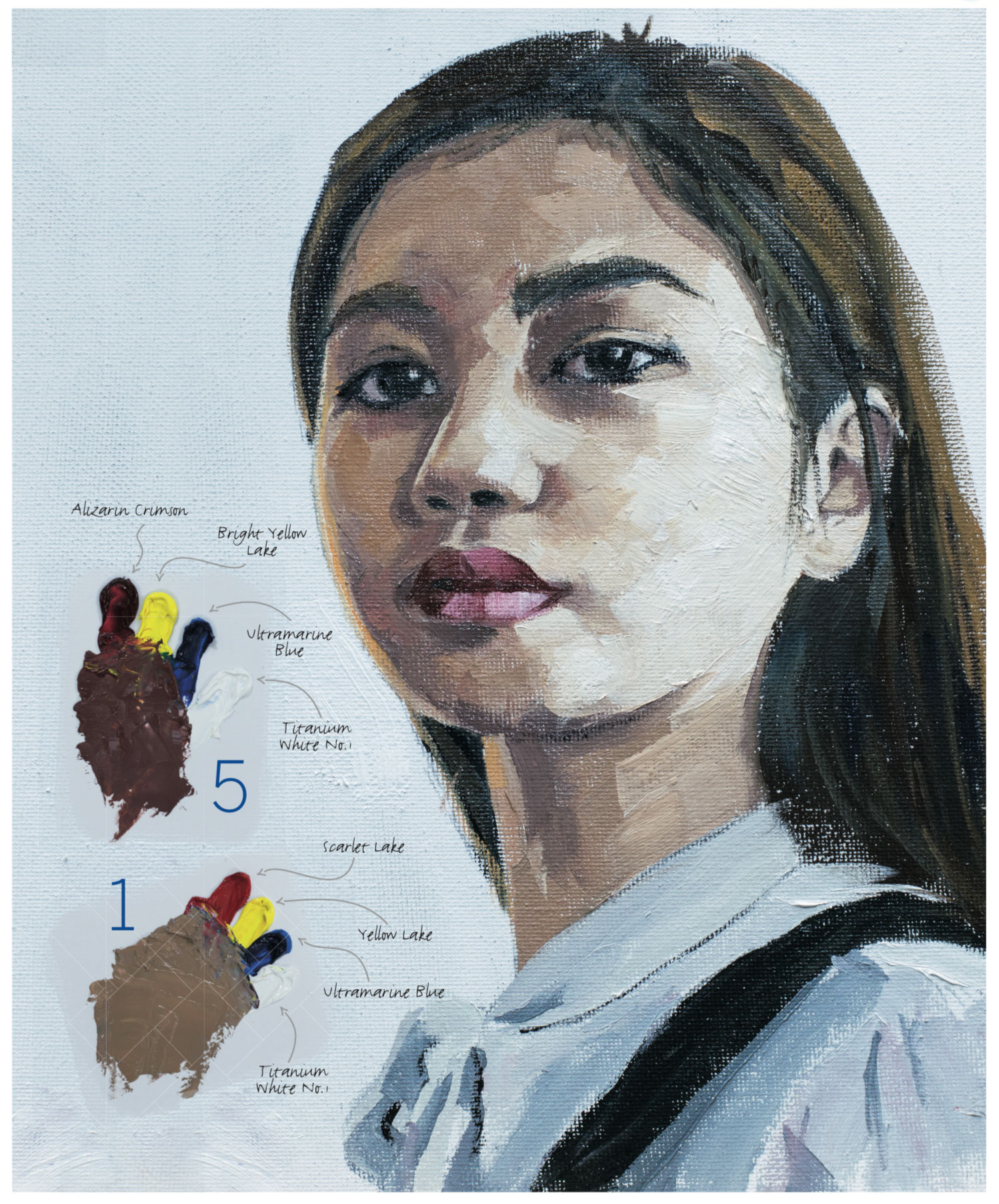
Expand upon the lesson learned in the first portrait by following the aforementioned approach on a different pare tone.
01. Mix for mid-tone pare

(Image: © Rob Lunn)
Beginning you need to determine the mid skin tone of your subject. This can be tricky to decide if in that location'southward a lot of dissimilar lighting in your scene, and so you may demand to approach stiff light sources separately.
Try squinting at the subject. This reduces the range of tones you lot can see and simplifies your subject's tonal range. Hither, Cherry Lake and Ultramarine Blue were mixed to produce this warm violet and then reduced its saturation by adding increasing amounts of Yellow Lake to get the warm light brown. The brown was then and then cooled and lightened past calculation Titanium White No.1.
02. Paint for lite skin tones
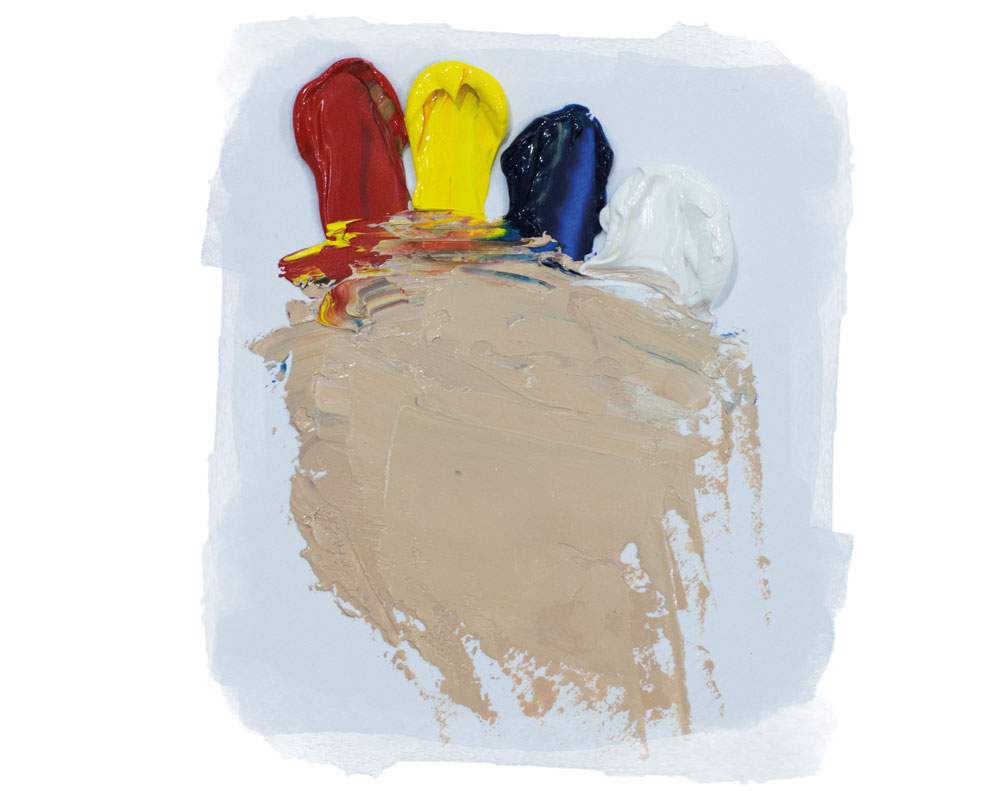
(Paradigm: © Rob Lunn)
Try using a tonal scale to accurately judge whether yous're reaching the desired tone. You tin make these yourself by adding white to i end of a strip of card and black at the other terminate. Then mix a 50 per cent grey and place halfway in between, and so 25 per cent and 75 per cent greys respectively.
You will be shifting tone about as you add increasing levels of details just it really helps to get this initial phase right showtime. Hither, the same mix is used as in pace one, but this fourth dimension nosotros added greater quantities of Yellow Lake and Titanium White No.1 until the desired tone was reached.
03. Make the darkest pare tones
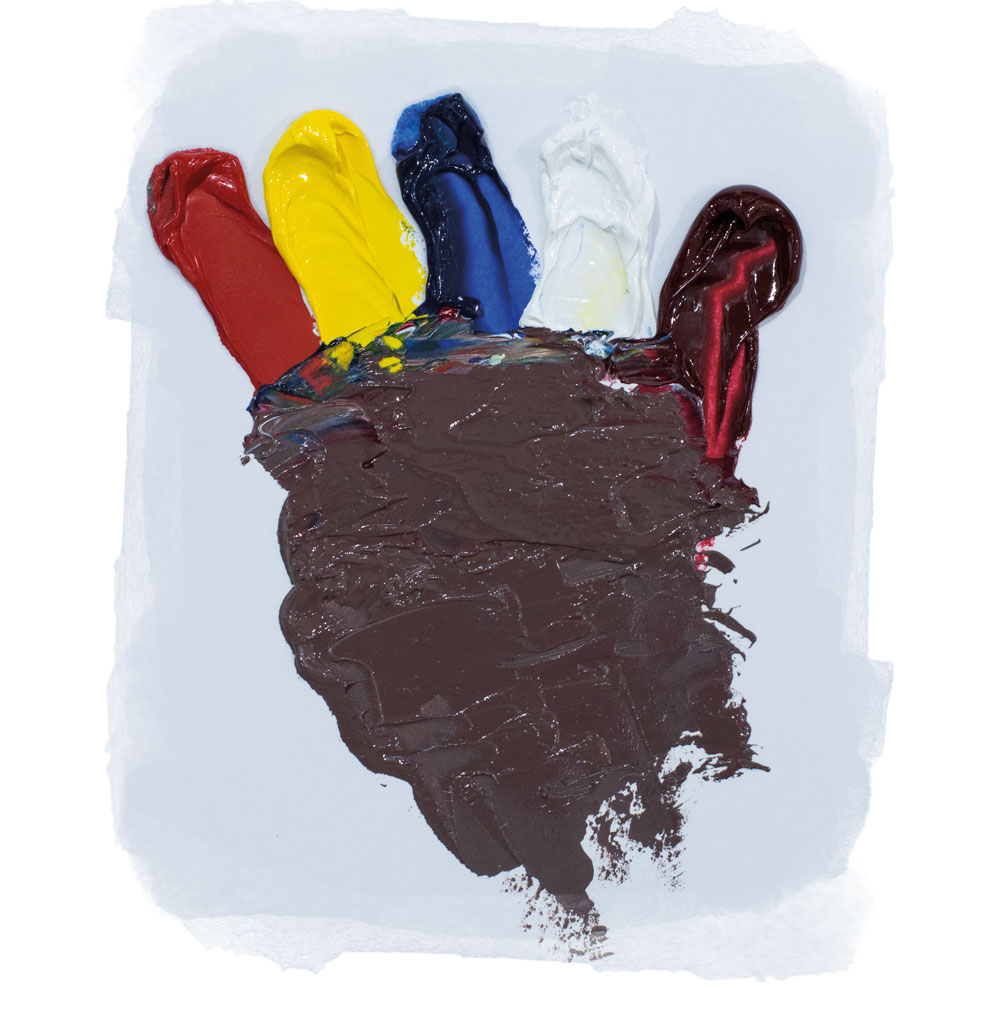
(Image: © Rob Lunn)
The darker areas of your subject'south skin tones have a more violet tendency, so y'all're going to have to shift the skin tone mix accordingly. Nosotros used Scarlet Lake and Ultramarine Blue to make a violet that leant more towards the blues to keep information technology cooler, then added Yellow Lake to desaturate the violet and some Alizarin Crimson to add even more depth to the mix. It was then lightened and cooled down with a niggling Titanium White No.1. Try calculation increasing amounts of Ultramarine Blueish and Alizarin Crimson if the mix isn't quite violet enough.
04. Mix paint for hair
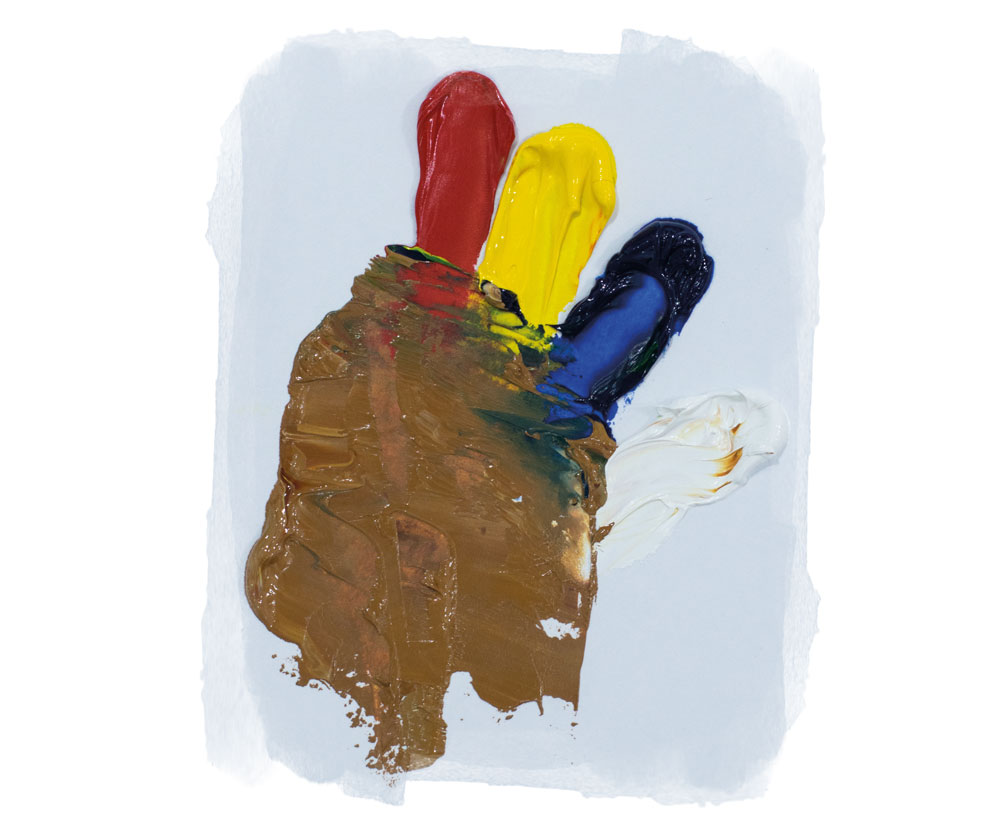
(Image: © Rob Lunn)
The subject'south hair is blackness in virtually places, only looks as if highlights are added besides. With the lighting these testify upwards as a light warm brown. We mixed Cerise Lake and Ultramarine Blue to create a warm violet, calculation more Scarlet Lake to this mix to keep the violet warmer, so reduced its saturation and turned the violet into a warm brown by adding Yellow Lake. The mix was then cooled and lightened by carefully adding small amounts of Titanium White No.1 until the desired colour was reached.
05. Mix pigment to create lips

(Image: © Rob Lunn)
In this portrait the subject has a very pronounced lip colour so the aim was for them to 'pop' without overpowering the composition. In lodge to reach this, the lip colour needed to exist related to the pare tones, only also have its own sense of identify in the painting. We mixed the violet but this fourth dimension replaced Scarlet Lake with Alizarin Ruby to give the mix a deeper, more crimson red colour. Small amounts of Vivid Yellow Lake and Titanium White No.ane were so added to subtly reduce the saturation and lighten the colour.
This content originally appeared in Paint & Depict: Oils. You tin buy the Oils bookazine here . Or explore the rest of the Paint & Describe bookazines .
Read more than:
- How to paint sunsets: Create the perfect coloured heaven
- How to choose which paint brush to employ
- How to stretch a canvas and fix upwardly for oil paints
Related manufactures
Source: https://www.creativebloq.com/advice/painting-skin-tones
Posted by: velardefourning.blogspot.com

0 Response to "How To Paint Darker Skin Tones"
Post a Comment